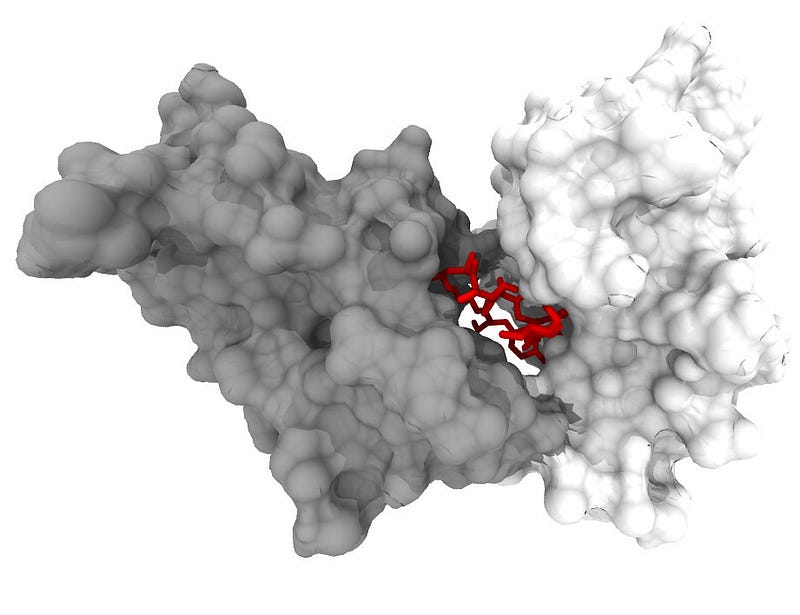Unraveling mTOR: The Dual Nature of Growth Regulation
Written on
Chapter 1: Understanding mTOR and Its Impact on Aging
The aging process is intricate, involving a myriad of pathways and a vast array of molecules. Simply modifying a single molecule is unlikely to significantly address age-related decline. However, certain substances seem to exert a profound influence. Much of the anti-aging research targets so-called "downstream targets," which are molecules that can affect multiple pathways at once. By influencing these targets, a cascade of effects can be initiated.
One of the most recognized downstream targets is mTOR, or mammalian target of rapamycin. This enzyme plays a crucial role in modifying proteins through phosphorylation and is deeply embedded in our body's metabolism and physiology. mTOR is essential for growth and maturation. However, maintaining high levels of mTOR activity in an already mature organism can contribute to aging. This leads to the hypothesis that reducing mTOR's activity post-maturity may help slow down the aging process.
Enter rapamycin.
Rapamycin, also known as Sirolimus, directly influences mTOR's function by inhibiting it, thereby decreasing its activity. But does this mean we can achieve eternal youth?
The Complexity of mTOR
Reality, as always, is more nuanced. mTOR exists in two forms: mTORC1 and mTORC2. These complexes are formed when mTOR associates with other proteins. Depending on the combination, mTORC1 is characterized by proteins such as raptor and PRAS40, while mTORC2 includes RICTOR and mSIN1.
Both complexes respond to different signals: mTORC1 is regulated by nutrient availability, whereas mTORC2 is influenced by PI3K and growth factors. They serve distinct functions—mTORC1 primarily manages protein synthesis and cell growth, while mTORC2 is more involved in cell metabolism and survival, though its roles are less thoroughly understood.
The interplay between mTORC1 and mTORC2 can be quite intricate.

While we won't delve deeply into the biochemical details, it's worth noting that the benefits of current mTOR inhibitors, particularly rapamycin, primarily stem from their action on mTORC1. However, these inhibitors have two notable limitations: they do not fully inhibit mTORC1 and also partially suppress mTORC2.
Section 1.1: Advancements in mTOR Research
Recent research has introduced a derivative of rapamycin called RapaLink1, designed to address these limitations by effectively inhibiting mTORC1 while sparing mTORC2 at lower doses. Initial experiments in human cell cultures yielded promising results.
Transitioning from laboratory dishes to live models, researchers observed that while rapamycin improved survival in starvation scenarios, RapaLink1 had the opposite effect, leading to quicker mortality under similar conditions. This observation highlighted that mTORC1 activation must be carefully balanced; both excessive and insufficient activation can lead to negative outcomes during nutritional stress.
Subsection 1.1.1: Potential Advantages of RapaLink1

Compared to rapamycin, RapaLink1 exhibited superior effectiveness in inhibiting mTORC1, promoting autophagy and halting cell proliferation. This raises intriguing possibilities for further studies.
In addition, RapaLink1 may mitigate the common side effects associated with rapamycin and similar compounds, such as elevated blood sugar and insulin resistance, potentially due to its more complete mTORC1 inhibition. Furthermore, while mTOR inhibitors have been utilized in cancer therapies with limited success, RapaLink1 shows promise even against treatment-resistant cancer types, signaling a need for more extensive investigation.
Chapter 2: Exploring mTOR Pathways and Their Implications
The first video titled "Regulation of growth by the mTOR pathway" explains the mechanisms by which mTOR regulates growth, providing a foundational understanding of its dual roles.
In the second video, "Explaining mTOR and the biology behind rapamycin," Peter Attia and David Sabatini delve into the biological significance of mTOR, offering insights into its influence on aging and health.